Balancing Corporate & Homesteading Lifestyles
Pita Pinta Asturiana
Posted on January 9, 2024 by Weekend Homesteader
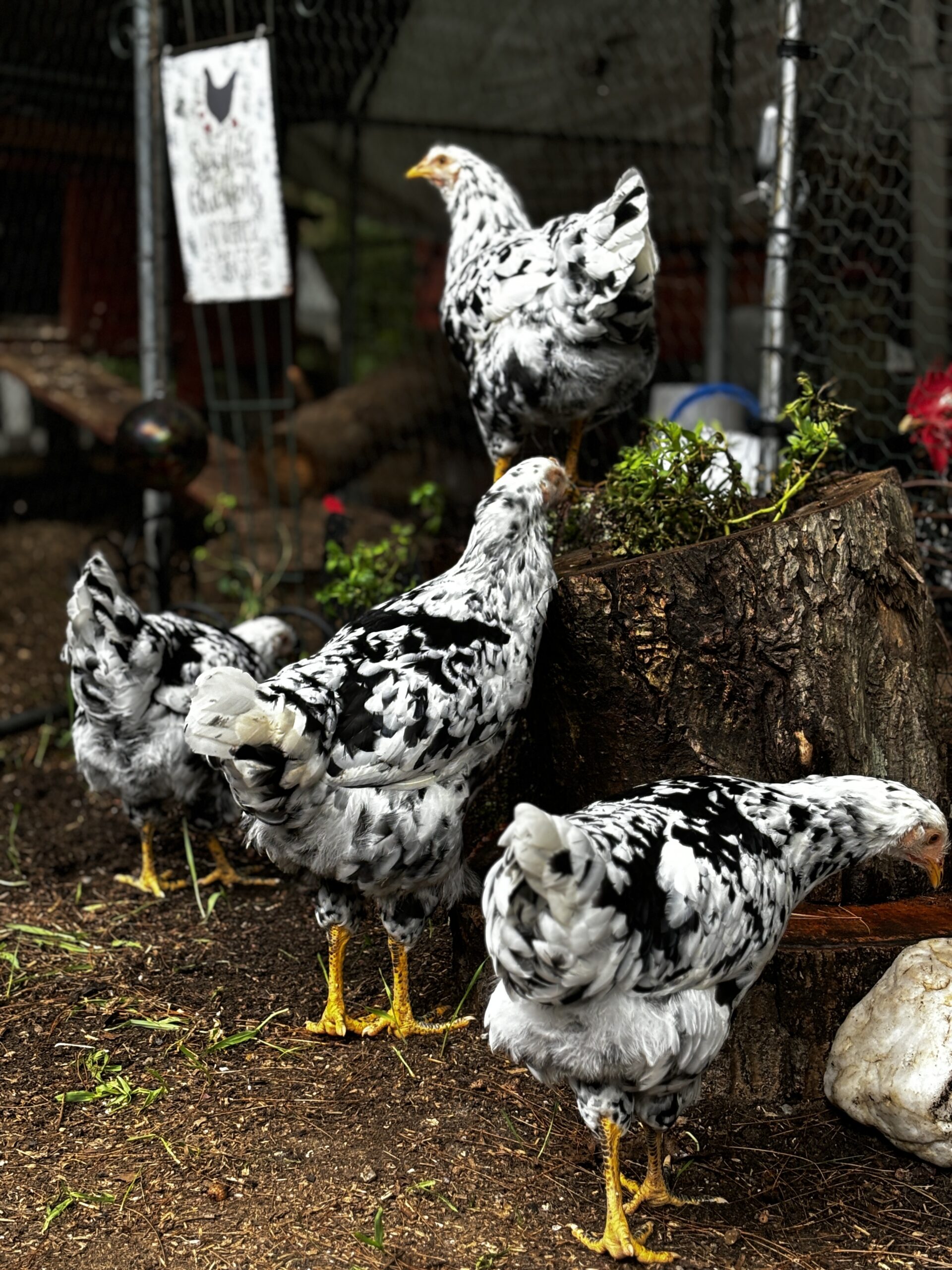
The Pita Pinta Chicken
The Pita Pinta, a distinctive and relatively rare breed of chicken, holds a special place in the hearts of poultry enthusiasts.
We are very excited to have a Pita Pinta rooster in our flock, Mr Melody.
The Pita Pinta, with its striking appearance and rich history, is a breed deeply rooted in the cultural and agricultural tapestry of Spain. Their name comes from the Asturian language, pita means "hen" and pinta meaning "painted" or “mottled”.
Geographical Roots
Asturias, Northern Spain: The Pita Pinta hails from the Asturias region in northern Spain, known for its lush landscapes and rich agricultural heritage. This area's unique climate and environment played a crucial role in shaping the breed's characteristics.
Historical Emergence
Traditional Farming Practices: The breed's history is intertwined with traditional Spanish farming practices. Originally, Pita Pintas were common among small farms and rural households in Asturias. They were valued for their dual-purpose qualities, providing both eggs and meat.
Local Variations: The Pita Pinta likely developed from local landrace chickens, adapting over time to the specific conditions of the Asturias region. It's thought that they may have been influenced by other Spanish breeds and possibly by breeds brought through trade and migration.
Cultural and Economic Role
Sustenance and Economy: For generations, the Pita Pinta was a staple in Asturian homesteads, contributing significantly to the sustenance of local families. Their ability to forage and thrive in the region's environment made them a reliable source of food.
A Symbol of Rural Life: In Asturian culture, the Pita Pinta became synonymous with rural life and traditional farming, reflecting a way of life that was deeply connected to the land and nature.
Near Extinction and Revival Efforts
Decline: With the advent of industrial farming and the introduction of more commercially viable breeds, the Pita Pinta's numbers dwindled dramatically in the 20th century. By the late 1900s, they were at the brink of extinction, with only a few specimens remaining.
Revival Movements: The turn of the 21st century saw a renewed interest in heritage breeds and sustainable farming practices. In Asturias, dedicated breeders and enthusiasts began efforts to revive the Pita Pinta, recognizing its historical and genetic value.
Current Status: Thanks to these conservation efforts, the Pita Pinta has seen a resurgence, though it remains a rare breed. It is now celebrated not only for its agricultural utility but also as a living symbol of Asturian heritage.
Physical Characteristics
Plumage: The most striking feature of the Pita Pinta is its plumage. These adorable chickens come in different colors. While they look exchequer or mottled, every chicken has its own feather pattern.
There are four main Pinta Pinta Asturiana color varieties: Abedul (black), Blanca (white), Pinta Negra (mottled black), and Pinta Roxa (mottled red-brown).
Pita Pinta Asturiana chickens have yellow unfeathered legs with black spots. Their skin is also yellow. They have orange eyes, red wattles, and red earlobes.
Size and Build: They are medium-sized birds with a robust and upright build. Roosters are significantly larger and more vibrant than hens. Males can weigh up to 9.5 lbs (4.3 kg), and females are tipping the scale at around 6 lbs (2.7 kg).
Comb and Wattles: The breed typically has a single comb, though rose combs are also seen. Both combs and wattles are well-developed and bright red.
Egg Production and Meat
Eggs: Pita Pintas are known for their good egg-laying capacity. They lay medium-sized eggs with a cream to light brown color.
Egg-Laying Frequency: A healthy Pita Pinta hen can lay around 200 to 250 eggs per year.
Because it is a cold hardy breed, they often keep laying during winter, although egg production will slow down.
These chickens are earlier layers and tend to lay eggs earlier than most other chicken breeds. As with most other chicken breeds, their productivity decreases as they age.
Pita Pinta Asturiana chickens rarely go broody when they lay eggs. Therefore, if you are looking for a broody hen, the Pita Pinta Asturiana chicken is not for you.
However, those that go broody make great mothers to their baby chicks. If you want to raise Pita Pinta Asturiana chicks, you will want to place the eggs under a broody hen or in an incubator to hatch.
Meat: While primarily known for egg production, they are also considered a dual-purpose breed due to their decent meat quality.
Temperament and Behavior
Personality: These chickens are known for their calm and friendly temperament. They are adaptable to various environments and can be easily handled, making them suitable for small farms and backyard flocks.
Foraging and Activity: They exhibit good foraging instincts and are quite active, enjoying free-ranging when the environment allows.
Care and Management
Feeding: A balanced diet of quality poultry feed supplemented with grains, greens, and occasional protein (like insects or worms) is ideal.
Housing: They require standard chicken care with a safe, clean coop and space to roam.
Climate Adaptability: Pita Pintas are hardy in various climates, though they should have shelter from extreme conditions.
Conservation and Importance:
Rare Breed Status: The Pita Pinta is still considered a rare breed, with dedicated efforts in Spain and by global poultry enthusiasts for its preservation.
Cultural Significance: In Asturias, the breed is not only a source of local pride but also an important part of agricultural heritage.
Conclusion
The Pita Pinta chicken, with its unique appearance and versatile nature, is a breed that captures the essence of traditional poultry keeping. Its recent revival highlights the importance of preserving heritage breeds, not just for their utility but also for their cultural significance. For small-scale farmers and backyard poultry enthusiasts, the Pita Pinta offers a blend of beauty, productivity, and gentle temperament, making it a cherished addition to any flock.
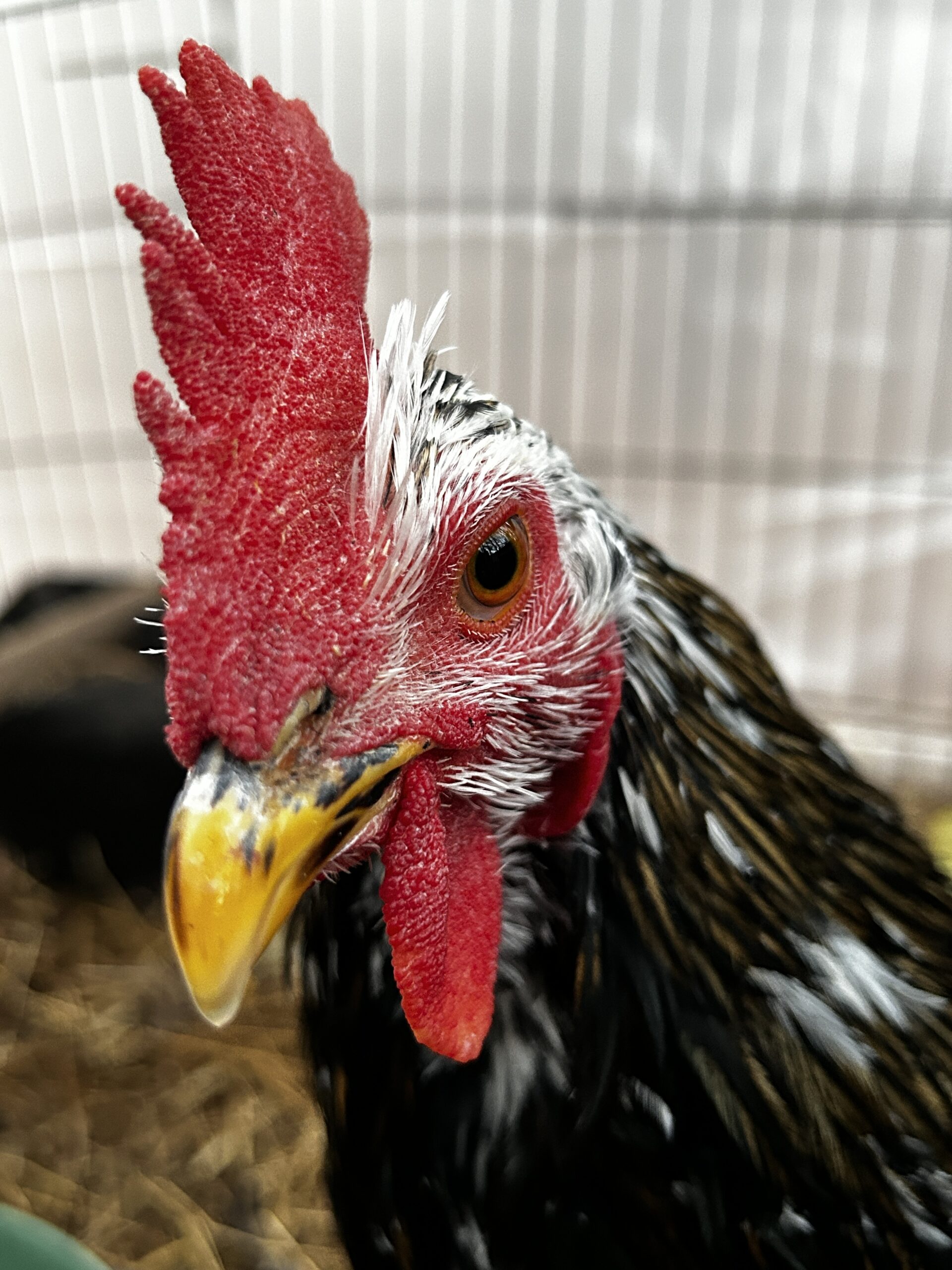
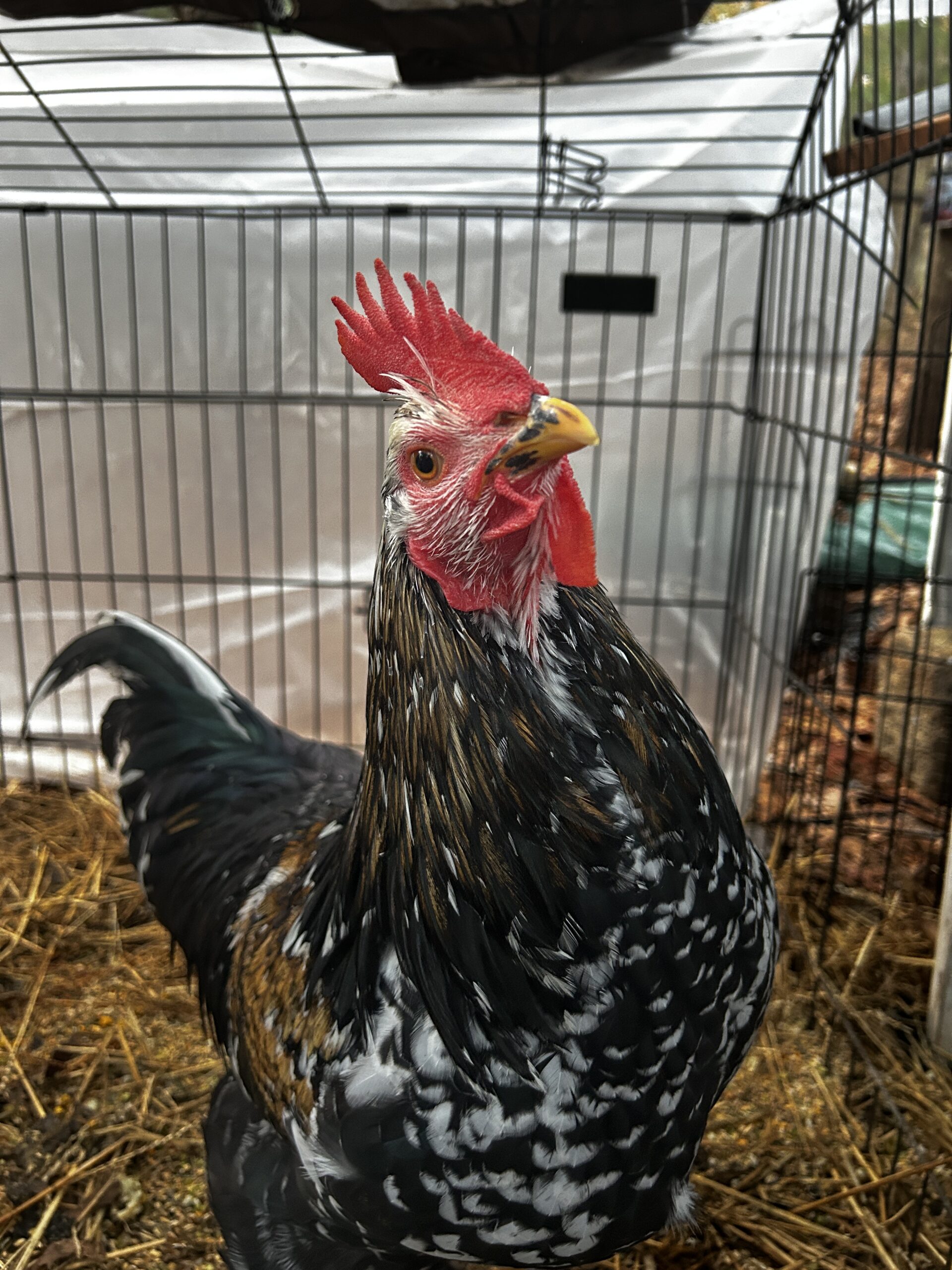
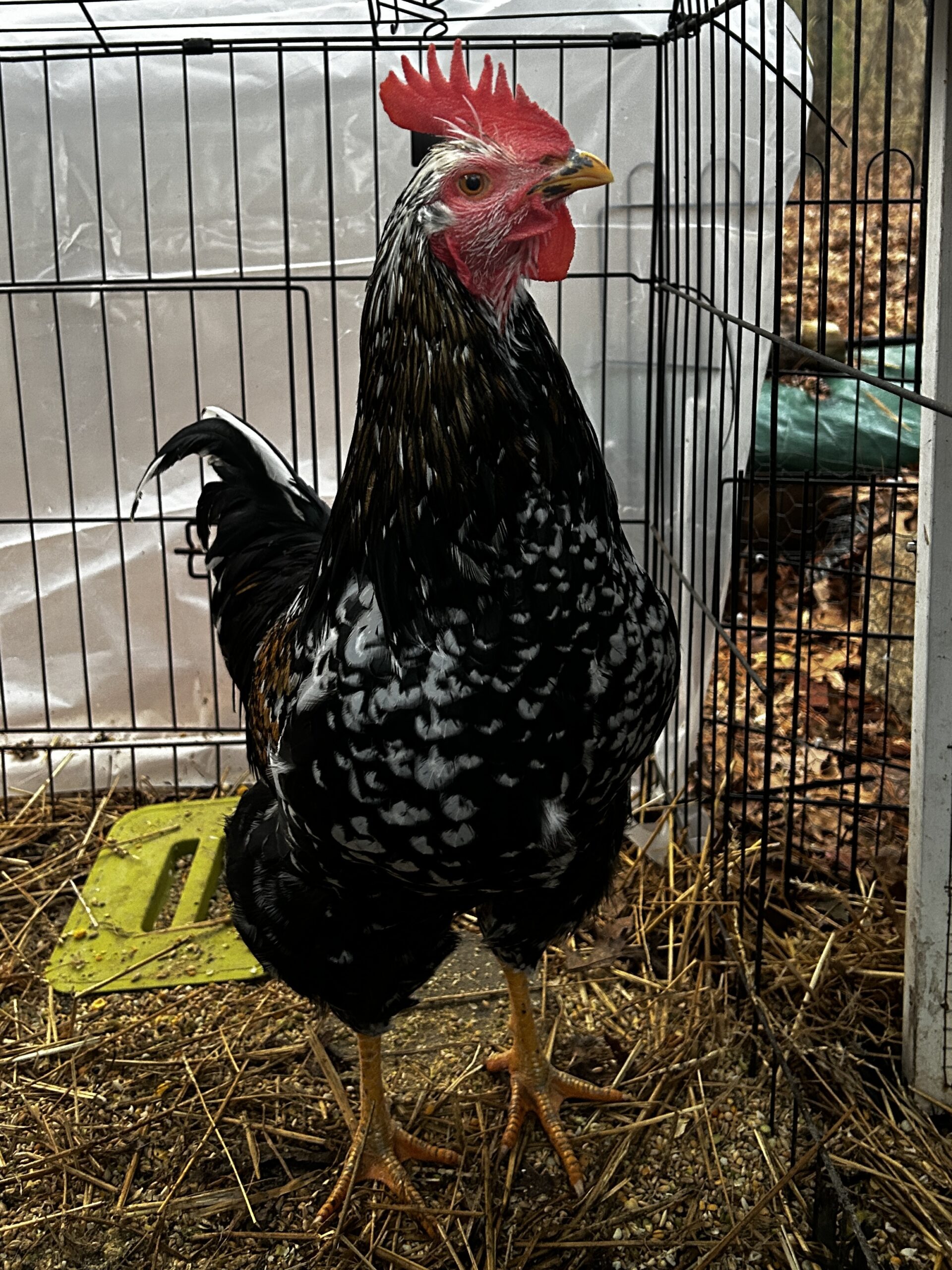
Note:
In the standard color varieties for Pita Pinta chickens, the recognized colors are primarily "Black Mottled" and "Mahogany Mottled." These two distinct colorations are characterized by a base color (black in the first and mahogany or reddish-brown in the second) with white mottling.
More about Pita Pintas:
A mix of black and brown within the same bird is not typically described as a standard color variety for Pita Pintas. The breed standards, as they are commonly known, emphasize either the black base color or the mahogany base color, but not a combination of both in a single bird.
However, it's important to remember that in the world of chicken breeding, especially in backyard or non-competitive settings, there can be considerable variation. While a mix of black and brown may not be a recognized standard for exhibition purposes, such birds can still be valued for their other traits, like egg production, hardiness, and temperament.
Melody, is a mix of both colors, he is a Pita Pinta but a cross between the colors.
Category: General
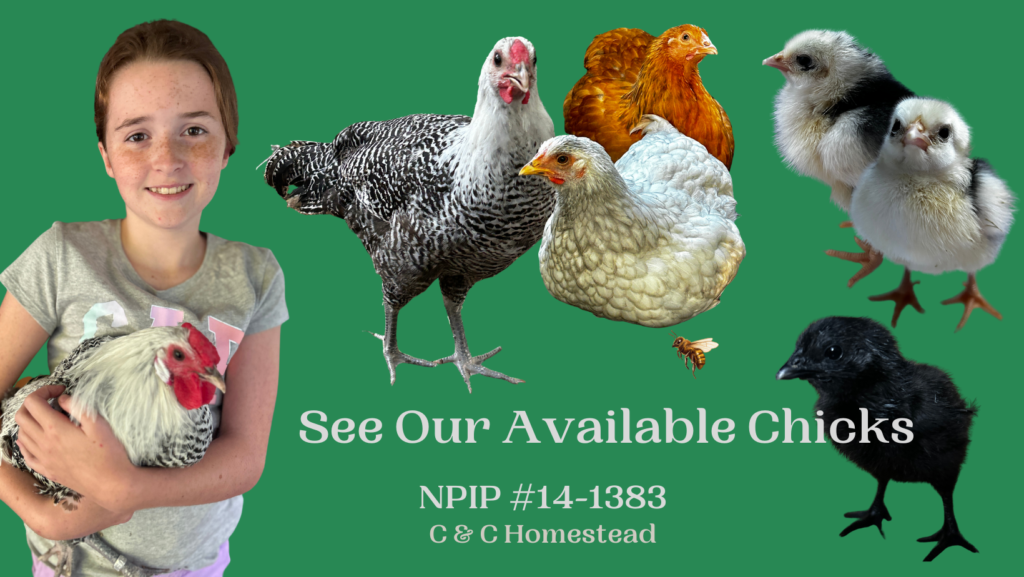
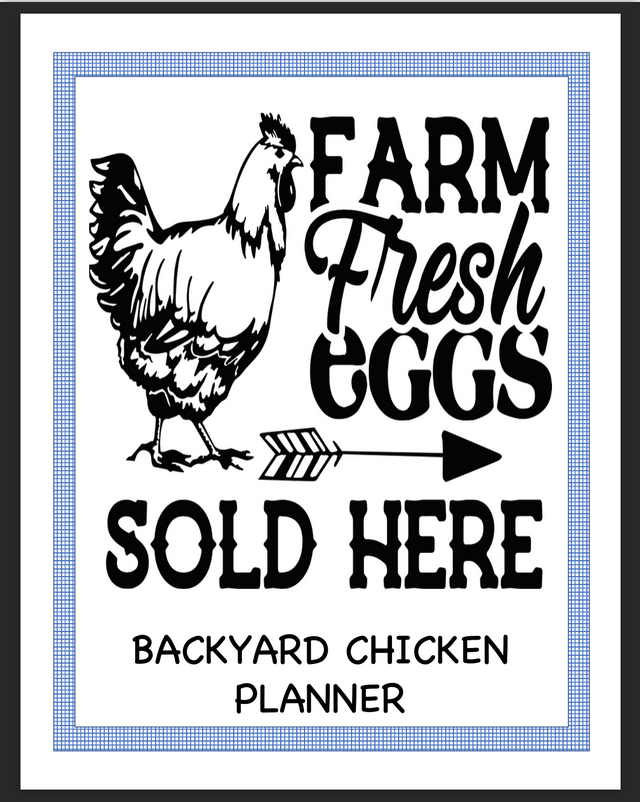

Latest Posts
Categories
Post Tags
Affiliate Marketing Affirmations Animal Grooming Animal Health Animal Reiki Animal Rescues Animals avian flu backyard chickens backyard flock Beekeeping Bees biosecurity bird flu Business Business Strategies Cats CBD chick care chicken care chicken health Chickens chicken treat chick health Cluck Kent Dogs Dog Training First Aid Gardening Health Herbs For Chickens Homesteading Long Covid Marek's Disease Mindset Pawsome Deals Personal Stories Places quarantine Reiki Rooster Roosters The Pawsitive Cause Project Time Management Trail Cam
Copyright © 2025 · All Rights Reserved · Weekend Homesteader
Theme: Natural Lite by Organic Themes · RSS Feed
